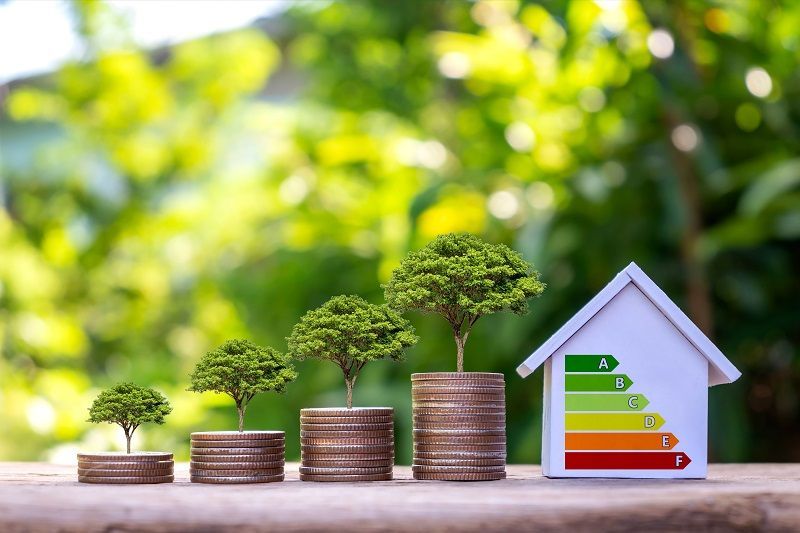Sustainable home living tips
In today’s world, sustainability isn’t just a buzzword—it’s a responsibility. Our homes consume a significant portion of energy, water, and resources, making them prime areas for adopting eco-friendly practices. Living sustainably not only helps protect the environment but can also save money, improve health, and create a more comfortable lifestyle. If you’re looking to make your home greener, here are practical sustainable home living tips to get you started.
1. Reduce Energy Consumption

Energy consumption is one of the biggest contributors to a household’s carbon footprint. Simple changes can make a big difference:
- Switch to LED lighting: LED bulbs use up to 80% less energy than traditional incandescent bulbs and last longer.
- Unplug devices: Many electronics consume energy even when turned off. Using smart power strips or unplugging devices can reduce this “phantom energy” usage.
- Invest in energy-efficient appliances: Look for ENERGY STAR-rated appliances, which use less electricity and water.
- Use natural light and ventilation: Open windows during the day instead of using lights, and rely on natural ventilation to reduce air conditioning usage.
These small changes can significantly reduce your energy bills while lessening your environmental impact.
2. Conserve Water
Water conservation is crucial, especially as global water scarcity becomes more severe. Here’s how to minimize water waste at home:
- Install low-flow fixtures: Low-flow showerheads and faucets can drastically reduce water usage without compromising comfort.
- Fix leaks promptly: Even a small leak can waste thousands of liters of water annually.
- Collect rainwater: Use rain barrels to collect water for gardening or cleaning outdoor areas.
- Practice mindful water habits: Turn off taps when brushing teeth, and only run dishwashers and washing machines with full loads.
These strategies help preserve this precious resource while lowering your water bills.
3. Reduce Waste and Recycle

Waste reduction is a cornerstone of sustainable living. A zero-waste approach may seem challenging, but small steps can make a big difference:
- Embrace recycling: Sort your waste properly into recyclable, compostable, and landfill categories.
- Compost organic waste: Food scraps and yard waste can be composted to create nutrient-rich soil for your garden.
- Use reusable products: Replace disposable items like plastic bags, straws, and water bottles with reusable alternatives.
- Buy in bulk: Reducing packaging waste by purchasing in bulk can significantly cut down on single-use plastics.
By rethinking our consumption habits, we reduce the amount of waste sent to landfills and lessen our environmental impact.
4. Choose Sustainable Materials
From furniture to home decor, the materials we use matter. Opting for sustainable materials ensures your home is eco-friendly without sacrificing style:
- Natural materials: Wood, bamboo, cork, and cotton are renewable and biodegradable options.
- Reclaimed or recycled materials: Using reclaimed wood, recycled metal, or upcycled furniture reduces the demand for new resources.
- Non-toxic paints and finishes: Traditional paints release harmful VOCs (volatile organic compounds). Look for low-VOC or zero-VOC alternatives to improve indoor air quality.
Selecting eco-conscious materials not only benefits the planet but can also create a healthier living environment for your family.
5. Adopt Eco-Friendly Habits

Sustainable living goes beyond products and appliances—it’s about daily habits:
- Grow your own food: Even a small kitchen garden or indoor herb pots can reduce reliance on store-bought produce and packaging.
- Cook smart: Meal planning reduces food waste, and using energy-efficient cooking methods like pressure cookers saves electricity.
- Opt for sustainable cleaning products: Many conventional cleaners contain harsh chemicals. Choose plant-based or homemade cleaning solutions.
- Mind your transportation: If possible, walk, cycle, or use public transport instead of driving, reducing your overall carbon footprint.
These habits, when practiced consistently, create a more sustainable lifestyle with lasting impact.
6. Embrace Renewable Energy
For homeowners ready to make a bigger change, investing in renewable energy is a powerful step:
- Solar panels: Installing solar panels can significantly reduce dependence on fossil fuels while lowering energy bills.
- Solar water heaters: These systems use sunlight to heat water, cutting down electricity or gas usage.
- Energy storage: Home batteries allow you to store excess solar energy for nighttime or cloudy days.
Transitioning to renewable energy may require an upfront investment, but the long-term savings and environmental benefits are substantial.
Conclusion
Sustainable home living is about making thoughtful choices—big or small—that reduce your environmental footprint while enhancing your quality of life. By conserving energy and water, reducing waste, choosing eco-friendly materials, adopting sustainable habits, and exploring renewable energy options, you can transform your home into an eco-conscious sanctuary. Each step may seem small, but collectively, they contribute to a healthier planet and a more sustainable future for generations to come.
Living sustainably isn’t just a trend; it’s a lifestyle that benefits you, your family, and the Earth. Start with one change today and watch how it evolves into a lasting, positive impact.


